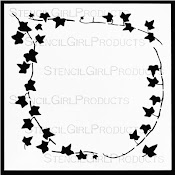StencilGirl Talk: Mary Beth Shaw's VLOG: March 2022
-
StencilGirl Talk: Mary Beth Shaw's VLOG: March 2022: Join Mary Beth in
Amsterdam and Paris! Click here for more information and registration!
Thursday, February 28, 2013
Wednesday, February 27, 2013
Saturday, February 23, 2013
Friday, February 22, 2013
Thursday, February 21, 2013
Tuesday, February 19, 2013
Tuesday, February 12, 2013
Saturday, February 9, 2013
Friday, February 8, 2013
Thursday, February 7, 2013
Wednesday, February 6, 2013
Tuesday, February 5, 2013
Subscribe to:
Comments (Atom)




















































































